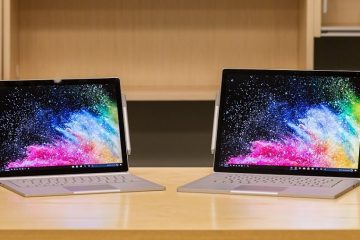Laptops, notebooks, tablets, e-readers, cell phones… Today, most of our electronic devices are powered by lithium ion batteries. Usually, everything runs smoothly but it can happen that the battery is defective and start to swell, expand or inflate. In this case, it is most often too late to fix it. Here are some explanations about how to prevent this from happening and, if it’s too late, how to dispose of your bloated battery.
Why Do We Use Lithium Ion Batteries?
One would ask, if lithium ion batteries fail so often, why are their use so widespread? Well, it because they are ideal for many of our electronic devices as they provide a high energy density with a small effect on memory and, above all, a low self-discharge. The thing is, they are also less stable that other sources of power, and this because the material they are made of – lithium – is a more reactive substance than any other battery material, especially because of the small amount of room they are assigned.
Now, when a lithium battery gets old, when it presents a manufacture default or else when it is not used properly, it can start to bulge and end up failing. The inflation usually comes from overheating, which makes the battery emit a mixture of flammable electrolytes. Gasses remain stuck within the battery thanks to a containment safety system that prevents it from igniting. The visible result of this malfunction is an inflation or and expansion of the battery.
How To Prevent A Battery From Swelling?
As we said before, most lithium battery bulging are due to overheating. It may come from a manufacture default, in which case you may try to use your guarantee cover, or just because the battery got too old, in which case you may just buy a new one (although it is most often cheaper to buy an entire new device).
But is can also be caused by a misuse of the battery. Here are some advices to avoid, or at least to postpone its deterioration:
- Do not leave your device plugged at all time. When the battery is fully loaded, unplug it and let it empty fully before loading at again.
- This is even more important during the first use of your device: when you get a new device, do not plug it until the battery is fully empty. Wait for the device to turn off before starting to charge the battery for the first time.
- On computers which are powered by a removable battery, remember to take off the battery every time you use your computer powered by cable.
- When using your computer powered by battery, always leave it on a smooth surface that does not keep warm, like smooth desk wood. Avoid glass desks, which keep warm too much, and ban any fabric surface like on your bed: this would stop the battery fan from working properly and lead to a quick overheating.
- Try to keep your battery as cool as possible. If working on your computer during several hours straight, it can be wise to raise the back of it with a book for example, in order to let air circulate better.
- Use a quality charger, not a cheap one from a junk shop, as the power intensity could not be the right one for your battery.
What To Do With An Inflated Battery?
If you did not anticipate the deterioration of your lithium battery and that it is already expanded, it is sadly too late to do anything for it. Even professionals will say that you must either replace it, either buy a new device. If this is your case, here are some things you must absolutely know.
Removal
- Handle your battery with extra care: as we said, a swollen battery is full of flammable gasses that can lead the device to burn.
- NEVER try to charge a swollen battery: it could cause the device to explode.
- NEVER try to compress or burst an inflated battery because of the same risks of explosion.
- On removable lithium batteries, once removed, immediately cover any exposed battery contacts with electrical tape or, if you don’t have any, regular tape (no paper or masking tape as it electricity-permeable).
- Once removed, place your battery in a cool and dry place, away from anything flammable. NEVER leave it under the sun or near a heat source.
Disposal
Note also that you shall not discard your battery in a regular bin, or worse in a landfill. Indeed, lithium is a very toxic substance presenting important environmental hazard. Improperly discarded batteries could become short-circuited or punctured in a sanitation truck and create a fire or an explosion. For that reason, ant lithium ion battery, may it be old, damage or even new must be strictly recycled at an authorised recycling center.
If you’re not sure where one is in your area, you can just visit your city’s website or county’s hazardous material disposal center to find out. Remember to never dispose of a swollen battery in a general battery recycling bin like you might find at the local electronics store as these are not made of lithium and are recycled more easily in thanks to different processes.
What Devices Function With A Lithium Ion Battery?
Just as a reminder for those who need it, here is a recap of the different devices that function with a lithium ion battery:
- Computers, notebook and tablets: note that in recent models, the battery of the device is usually not accessible. However, if you have an old laptop, it is much likely that the battery is removable;
- Cell phones: all mobile phones work with a removable lithium ion battery;
- Digital cameras and cam recorders,
- Game consoles,
- Electric vehicles, although is much advised to let a professional take care of any potential default,
- Home improvment tools.
On the other hand, other informatics hardware do not need such batteries, like external hard drive, which require less power and can function thanks to the power of the computer itself once plugged to it with a simple USB cable.


